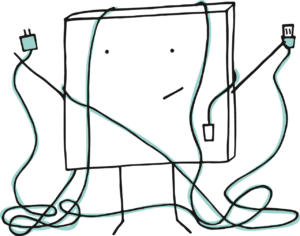Why are you hiring?

Why did you hire your last employee?
When asking business owners why they are hiring, their answers are usually a version of the following: they have gotten too busy, there is too much to do in their business, their client base has grown, they feel it is time to bring on a [insert job title: HR person; head of marketing; sales representative]
In short: you probably hired someone to solve a problem.
Hiring starts with a problem
When it is time to hire, don’t start with the person, or the job title.

Start with the problem.
Research about problem-solving has shown how we – humans – tend to suggest solutions before fully examining the problem. For example, we might say “I’m so busy I need a marketing manager to take those tasks off my plate”. A proper analysis should start with “I am so busy, let me see where I am spending my time”, followed by what is being neglected, followed by evaluating skills and value of time. Until a solution presents itself without being decided in advance.
Step one: what is the problem
What problem are you solving?
If you are too busy, ask yourself: too busy for what?
If there is too much to do, start by analyzing where you want to and should be spending your time.
If your client base has grown, analyze your obstacles for scaling more and better.
If it is time to hire a [insert job title], make a list of what difference that role will make to your business.
In each case, you want to determine what changes will increase growth, and increase productivity. You want to both be attracting more clients and motivating your employees.
Step two: what is the role
What will solve the problem you identified?
Note that I said “what”, not “who”.
Let the job title be the last thing you decide. Start with a description of the role.
- What sort of tasks should be happening?
- Which decisions must be made?
- How does this work relate to the rest of the business?
- How does it contribute to business success?
Create a full description of the role you need, and once you have that, assign it a job title.
Now you will be ready to write a job description that touches upon all your core needs.
Do you have an onboarding plan that works for every new role?
Let’s create one together: contact me for a 3-session consultancy on building your onboarding plan